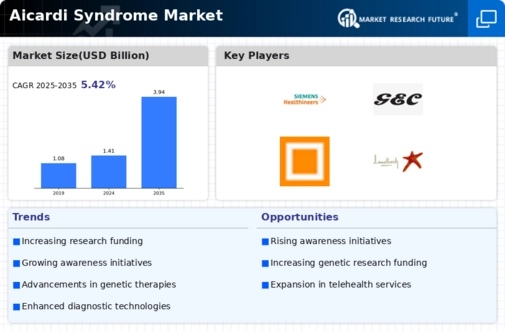Market Analysis
In-depth Analysis of Aicardi Syndrome Market Industry Landscape
The ever-changing market dynamics of Aicardi syndrome reflect the complexity surrounding this rare neurodevelopmental disorder and how the healthcare landscape responds to its peculiarities. Aicardi syndrome is a condition characterized mainly by missing or poorly developed corpus callosum and other neurological abnormalities often appearing in females more than males. Factors that influence the markets are such as disease rarity, diagnostics, treatment options and research undertaken, plus broader context of rare diseases.
Market dynamics are shaped by how rare Aicardi syndrome is. The small number of cases makes it difficult for people living with it to be diagnosed and treated because only a few doctors would have any experience on Aicardi syndrome. It is also important to note that the scarce patient numbers will shape research priorities together with commercialization potential for treatments available for them. The infrequency of this disorder underscores the importance of specialized care, collaborative research, and targeted therapeutic approaches.
Diagnostic advancements have been crucial in defining market dynamics related to Aicardi syndrome. First diagnosis can at times be helpful in intervention selection hence proper management. This implies that innovations made on genetics tests and neuroimaging techniques can aid in identifying as well as confirming cases associated with this disorder. Such improvements in diagnosis not only help understand it better but also guide personalized treatment stratagems.
In terms of treatment, supportive care has been a major focus when dealing with patients suffering from Aicardi’s syndrome. Among them are seizure control management programs aimed at physical therapy as well as helping patients reach their developmental milestones accordingly through interventions geared towards supporting developmental growths. Research initiatives underway aim at unveiling targeted therapies for neurological manifestations linked to this disorder hence improving quality life among individuals having this chronic ailment.
Research efforts significantly influence market dynamics in relation to how Aicardi syndrome is managed today. Partnership between researchers together healthcare providers and patient groups helps explore the pathogenesis of this disease along with designing probable therapies. The market responds to breakthroughs in science by developing new therapeutic options, which meet the unmet needs of patients suffering from Aicardi syndrome and their loved ones.
Among others, economic factors such as healthcare, insurance coverage and accessibility have been identified as impacting on the market dynamics. Cost of specialized care, therapies and other supportive services create burden for families and health systems. In relation to this drug companies together with other stakeholders need to put into consideration economic factors when they are providing products or services that relate to management of Aicardi syndrome.
The context in which rare diseases are managed has a bearing on the market dynamics for Aicardi syndrome. Regulatory frameworks, orphan drug designations and incentives for rare disease research play a role in shaping the landscape for potential treatments. The market responds to evolving policies and initiatives aimed at addressing the unique challenges posed by rare diseases, emphasizing the importance of a collaborative and patient-centric approach.







Leave a Comment